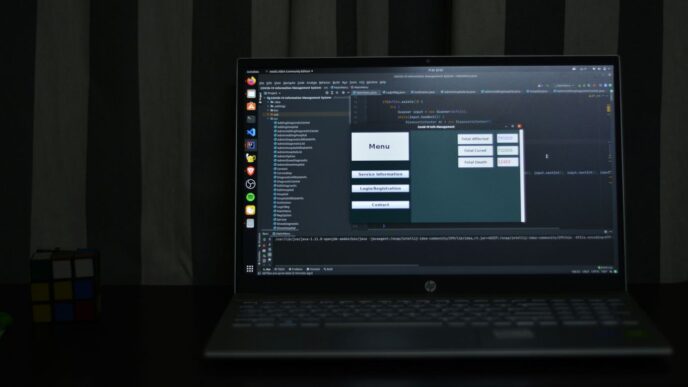Server Message Block (SMB) is a network file sharing protocol that enables applications, users, and computers to share files, printers, and other resources across a network. Originally developed by IBM in the 1980s, SMB has become the backbone of Windows file sharing and network communication. According to Wikipedia, SMB operates as a client-server protocol where clients make specific requests and servers respond accordingly, facilitating seamless resource sharing across different operating systems and network architectures.
The protocol has evolved significantly since its inception, with each iteration bringing enhanced security, performance, and functionality. SMB enables organizations to create centralized file repositories, implement collaborative workflows, and maintain consistent data access across distributed teams. Its integration into Windows operating systems makes it particularly valuable for businesses relying on Microsoft infrastructure, though its cross-platform compatibility extends its utility far beyond Windows environments.
How does SMB work in Windows environments?
In Windows environments, SMB operates through two core services: the “Server” service (LanmanServer) and the “Workstation” service (LanmanWorkstation). The Server service handles incoming requests from clients seeking access to shared resources, while the Workstation service manages outgoing connections to remote shares. This dual-service architecture ensures efficient bidirectional communication and resource management across the network.
When a Windows client attempts to access a shared folder, it initiates an SMB session by sending authentication credentials to the server. The server validates these credentials against Active Directory or local security databases, then grants appropriate access based on configured permissions. The protocol handles everything from initial connection negotiation to file transfer operations, ensuring data integrity and security throughout the process. Modern Windows implementations use Kerberos for authentication in domain environments, providing robust security against various attack vectors.
What are the different versions of SMB?
SMB has undergone significant evolution through multiple versions, each addressing limitations of its predecessors while introducing new capabilities. SMB 1.0, the original protocol, provided basic file sharing functionality but suffered from security vulnerabilities and performance limitations. Microsoft strongly recommends disabling SMB 1.0 due to these vulnerabilities, particularly after high-profile ransomware attacks exploited its weaknesses.
SMB 2.0, introduced with Windows Vista and Server 2008, brought substantial improvements including reduced protocol chattiness, improved performance through larger buffer sizes, and enhanced scalability. SMB 3.0, released with Windows 8 and Server 2012, added game-changing features like end-to-end encryption, improved performance over WAN connections, and support for transparent failover in clustered environments. The latest iterations, including SMB 3.1.1, continue to enhance security with pre-authentication integrity checks and improved encryption algorithms.
Understanding SMB Security Features
Modern SMB implementations incorporate multiple security layers to protect data in transit and at rest. Smb share windows security has become increasingly sophisticated, with SMB 3.0 introducing AES-CCM encryption for data transfers, ensuring that sensitive information remains protected from eavesdropping attacks. This encryption occurs transparently, requiring no additional configuration from end users while providing enterprise-grade security.
Beyond encryption, SMB implements message signing to prevent man-in-the-middle attacks and ensure data integrity. Pre-authentication integrity in SMB 3.1.1 further strengthens security by protecting against tampering during the connection establishment phase. These features work together to create a comprehensive security framework that meets modern compliance requirements while maintaining backward compatibility where necessary.
How to configure SMB shares in Windows?
Configuring SMB shares in Windows involves several steps, beginning with enabling file and printer sharing in the Network and Sharing Center. Administrators must first identify the folders to share, then right-click and select “Properties” followed by the “Sharing” tab. The “Advanced Sharing” option provides granular control over share permissions, allowing administrators to specify user access levels and concurrent connection limits.
Permission management requires careful attention to both share-level and NTFS permissions. Share permissions control network access, while NTFS permissions govern local and network access at the file system level. Best practice dictates setting share permissions to “Full Control” for authenticated users, then using NTFS permissions to implement granular security. This approach simplifies administration while maintaining robust access control. According to Microsoft documentation, proper permission configuration is crucial for maintaining security while enabling necessary access.
What are the performance optimizations for SMB?
SMB performance optimization involves multiple considerations, from network infrastructure to protocol-specific tuning. SMB Multichannel, available in SMB 3.0 and later, automatically detects and utilizes multiple network paths between clients and servers, aggregating bandwidth and providing fault tolerance. This feature requires no additional configuration when multiple NICs are present, automatically improving throughput for large file transfers.
SMB Direct leverages RDMA-capable network adapters to achieve high throughput with low latency and minimal CPU utilization. This technology is particularly valuable in datacenter scenarios involving large-scale data transfers, virtualization workloads, or SQL Server deployments. Large MTU support, also known as Jumbo Frames, can significantly improve performance by reducing packet overhead. Administrators should also consider implementing SMB compression in SMB 3.1.1 for scenarios involving limited bandwidth or high-latency connections.
How does SMB handle high availability and clustering?
SMB 3.0 introduced revolutionary high availability features that transformed how organizations deploy file services. SMB Transparent Failover enables administrators to perform hardware or software maintenance on cluster nodes without interrupting client connections. This capability ensures continuous availability for critical file services, allowing organizations to meet stringent uptime requirements without complex application-level failover mechanisms.
SMB Scale-Out allows multiple cluster nodes to simultaneously serve the same shared folders, providing active-active file sharing that increases aggregate throughput and balances client connections across available nodes. This architecture proves particularly valuable for Hyper-V deployments storing virtual machine files on SMB shares, as it eliminates single points of failure while improving performance. The combination of these features enables organizations to build resilient file services that rival traditional SAN solutions at a fraction of the cost.
What role does SMB play in cloud integration?
SMB has evolved to support hybrid cloud scenarios, with Azure Files providing fully managed SMB file shares in the cloud. These cloud-based shares integrate seamlessly with on-premises Active Directory environments, enabling organizations to extend their file services to the cloud without modifying existing applications or workflows. Azure File Sync further enhances this integration by synchronizing on-premises file servers with Azure Files, providing cloud tiering and multi-site synchronization capabilities.
The protocol’s cloud integration extends beyond storage, supporting scenarios like cloud-based backup, disaster recovery, and global file collaboration. SMB over QUIC, introduced in Windows Server 2022, enables secure SMB access over the internet without requiring VPN connections, simplifying remote access while maintaining enterprise security standards. This evolution positions SMB as a critical component in modern hybrid infrastructure strategies.
How to troubleshoot common SMB issues?
Troubleshooting SMB issues requires systematic approach and understanding of common failure points. Connectivity problems often stem from firewall configurations blocking SMB ports (445 for SMB 3.0, 139 for older versions) or network discovery settings preventing browse list population. The Windows Event Viewer provides detailed logging for SMB-related events, with the Microsoft-Windows-SMBClient and Microsoft-Windows-SMBServer event sources offering valuable diagnostic information.
Get-SmbConnection | Select-Object ServerName, ShareName, Dialect
Get-SmbServerConfiguration
Test-NetConnection -ComputerName ServerName -Port 445
Performance issues frequently relate to SMB signing requirements, particularly when connecting to domain controllers or servers with strict security policies. The Get-SmbConnection PowerShell cmdlet reveals active connections and their negotiated capabilities, helping identify protocol version mismatches or security setting conflicts. Network traces using tools like Wireshark or Message Analyzer provide deeper insights into protocol-level issues, though interpreting these requires familiarity with SMB message structures.
What are best practices for SMB deployment?
Successful SMB deployment requires adherence to established best practices that balance security, performance, and compatibility. Organizations should disable SMB 1.0 across their environment, as this legacy protocol lacks modern security features and has known vulnerabilities. Regular security updates must be applied promptly, as SMB has been a target for various exploits. Implementing network segmentation and restricting SMB traffic to necessary network segments reduces attack surface.
Monitoring and auditing form crucial components of SMB management. Windows provides comprehensive auditing capabilities for file access, allowing organizations to track who accesses specific resources and when. Regular review of share permissions ensures that access remains appropriate as organizational needs evolve. Performance baselines should be established and monitored to identify degradation before it impacts users. Documentation of share structures, permissions, and dependencies facilitates troubleshooting and ensures continuity during staff transitions.
How is SMB evolving for future needs?
SMB continues evolving to meet emerging technological challenges and opportunities. SMB over QUIC represents a significant advancement, leveraging the QUIC transport protocol to provide secure, efficient file access over untrusted networks. This technology eliminates traditional VPN requirements while maintaining security through TLS 1.3 encryption and certificate-based authentication. The integration with modern transport protocols positions SMB for continued relevance in increasingly distributed computing environments.
Compression improvements in recent SMB versions address bandwidth constraints in wide-area networking scenarios, automatically compressing file transfers when beneficial. Enhanced integration with cloud services and container platforms ensures SMB remains relevant in modern application architectures. Microsoft’s continued investment in SMB development, including performance optimizations for flash storage and improvements in protocol efficiency, demonstrates the protocol’s central role in enterprise file services for years to come.














